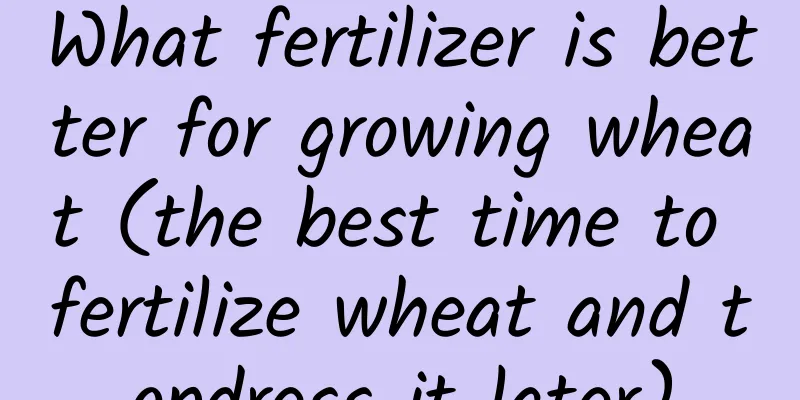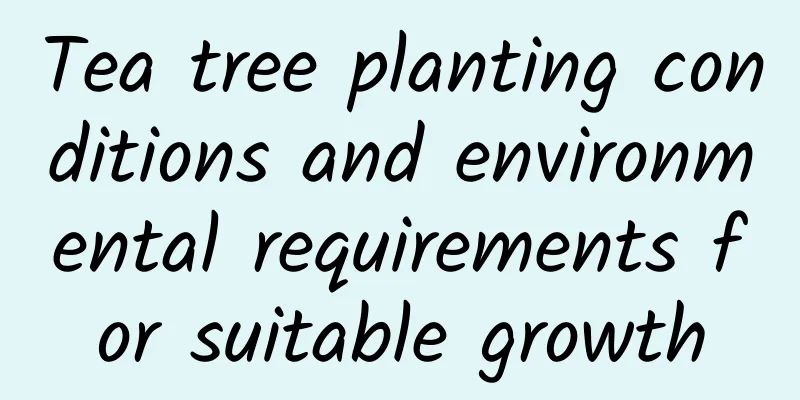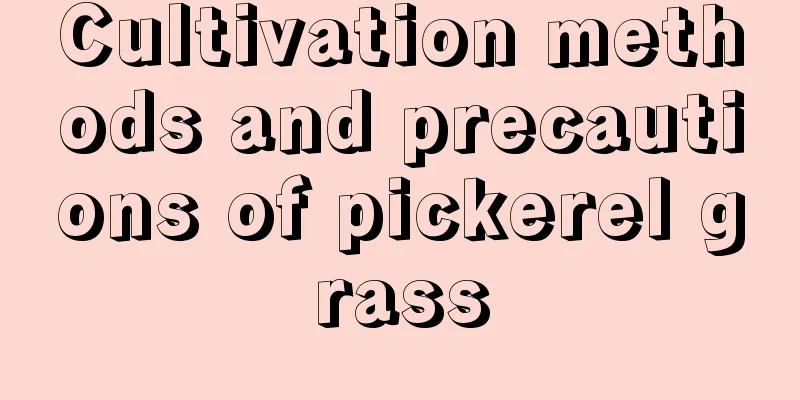What fertilizer is better for growing wheat (the best time to fertilize wheat and topdress it later)

Basic fertilizer for wheat sowingWhen wheat is sown, the main fertilizer used is to apply enough base fertilizer, i.e. basal fertilizer . Wheat base fertilizer is very critical and is the main basic fertilizer source in the entire wheat production cycle and an indispensable fertilizer. So, the base fertilizer at the time of wheat sowing is so important. What kind of fertilizer should be mainly applied? The base fertilizer for wheat must contain the three elements of nitrogen, phosphorus and potassium. Generally, there are two ways to use fertilizer in rural areas: one is to use organic fertilizer, and the other is to use chemical fertilizer. Organic fertilizer is generally the organic fertilizer commonly used in rural areas, about 3,000 to 5,000 kilograms per mu. In general, you can use 80 to 100 kilograms of nitrogen, phosphorus and potassium compound fertilizer per mu, or a mixture of 30 kilograms of urea, 45 kilograms of superphosphate and 25 kilograms of potassium sulfate. Applying green fertilizer during wheat seedling stageGreen fertilizer for wheat seedlings is generally applied after the Beginning of Spring Festival, and nitrogen fertilizers such as urea are usually the most commonly used. When applying green fertilizer, the amount of fertilizer to be applied must be determined based on the condition of the wheat seedlings. Generally, 30 to 40 kilograms of urea are applied per mu. Alternatively, 50 to 60 kilograms of nitrogen fertilizers such as ammonium bicarbonate and ammonium chloride are applied per mu. When applying fertilizer, you must choose a place with good soil moisture so that the fertilizer will dissolve as soon as it hits the soil. In addition, wheat must be used in a dew-free environment to avoid applying fertilizer when the wheat leaves are covered with dew, which will have a very big impact on the wheat and burn the wheat leaves. Topdressing wheat after the new yearThe growing period of wheat is more than 230 days. During the entire growth and development process of wheat, it needs to absorb a large amount of nutrients, on the premise of applying sufficient base fertilizer. Only by applying top dressing at the appropriate time can the needs of wheat stem and leaf growth and grain development be met. Wheat has a long growing period. According to its developmental characteristics, the entire growing period of wheat is divided into several periods, including seedling stage, jointing stage, heading stage, flowering stage, filling stage and maturity stage. The wheat seedling stage is mainly for vegetative growth, and the seedlings will also tiller during the growth process. When wheat enters the jointing stage, it indicates that the tillering of wheat has stopped and the growth of stems and leaves and the formation of spikelets have begun. At this time, it needs to absorb a lot of nutrients and water. Under the condition of sufficient water and fertilizer, the ear formation rate is high, otherwise, the ear formation rate is reduced and a large number of tillers will become ineffective tillers. Therefore, top dressing before wheat jointing is the key to improving the wheat ear formation rate. Topdressing timeThe purpose of wheat topdressing is to supplement nutrition and increase the wheat ear formation rate. The effect of wheat topdressing is affected by many factors such as sowing time, soil moisture conditions, variety, water and fertilizer, etc. Wheat seedlings of different sizes have different times when they enter the jointing stage. Therefore, the specific time for topdressing wheat should be determined according to the growth of the wheat seedlings. In the Huanghuaihai region, the southern area enters the jointing period early because the temperature rises quickly, while the northern area enters the jointing period relatively late because the temperature rises slowly. The jointing period of winter wheat is generally in early to mid-March. Therefore, the best time for topdressing wheat is from late February to early March. For weak seedlings, the time of topdressing should be appropriately advanced due to their late jointing, which can promote the growth of seedlings. For wheat seedlings with large population density and vigorous growth trend, topdressing can be appropriately postponed, or only foliar fertilizer can be sprayed. Foliar fertilizer spraying of wheat in the middle and late stagesIt is recommended to apply wheat foliar fertilizer three times in the middle and late stages of wheat growth, which is beneficial to wheat disease prevention, growth and development, increasing yield and improving quality. The first time should be done during the jointing stage of wheat, the second time should be done during the flowering stage of wheat, and the last time should be done during the filling stage of wheat. When spraying, the foliar fertilizer used is mainly potassium dihydrogen phosphate, with a concentration of 0.1~0.2%. We can also add some drugs for disease prevention, insect prevention and growth regulation. Reducing the number of spraying, saving time, effort and labor costs are all very beneficial. Generally speaking, after three applications of foliar fertilizer on wheat, the wheat stems can become thicker and more resistant to lodging. Improving the ability to resist diseases and pests, making wheat grains fuller, improving quality, and increasing thousand-grain weight can achieve the goal of increasing yield. In summary, during the entire growth and development period of wheat from sowing to harvesting, fertilization can be divided into base fertilizer, green fertilizer and foliar fertilizer. These three fertilization methods can effectively provide a rich and sufficient source of nutrients for the growth, development and maturity of wheat, and can improve quality and increase yield. 【 Summarize】 In summary, during the entire growth and development period of wheat from sowing to harvesting, fertilization can be divided into base fertilizer, green fertilizer and foliar fertilizer. These three fertilization methods can effectively provide a rich and sufficient source of nutrients for the growth, development and maturity of wheat, and can improve quality and increase yield. |
>>: Is it true that hyacinths cause cancer? (Is the smell of hyacinths at home toxic?)
Recommend
What are the conditions for growing water lilies?
1. Breeding 1. Flower pots: Try to choose flower ...
How much is the yield of cowpea per mu?
Cowpea yield per mu There are many varieties of c...
How to propagate Hosta
1. Seed propagation Since the seeds of Hosta are ...
How to grow pennywort so that it blooms out of the pot?
The pennywort is a popular plant known for its ea...
First love blossoms
First love blossoms As you continue to care for i...
Breeding methods and precautions of Fumu
Breeding methods and precautions soil Fukumi is s...
Cultivation methods and precautions of toon sprouts
1. Lighting During the breeding process, special ...
Poems about Magnolia
Tang Dynasty Poetry about Magnolia "Spring E...
How can a novice grow hydrangea seedlings well (how to grow hydrangeas well at home)
How to grow hydrangeas well After we buy hydrange...
How to grow camellia in winter
1. Maintenance place The temperature is relativel...
How to prune the calyx
How to prune the branches of the calyx The branch...
How many days to change the water when growing green radish in water
1. Before rooting If you have just started growin...
Rooting method of elm tree
1. Treat with rooting water If you want the elm t...
How to change the soil of dragon beard and the time and method of changing the soil
When to change the soil for dragon beard It is ge...
Breeding methods and precautions of silver thorn
1. Maintenance methods 1. Substrate selection: Si...









